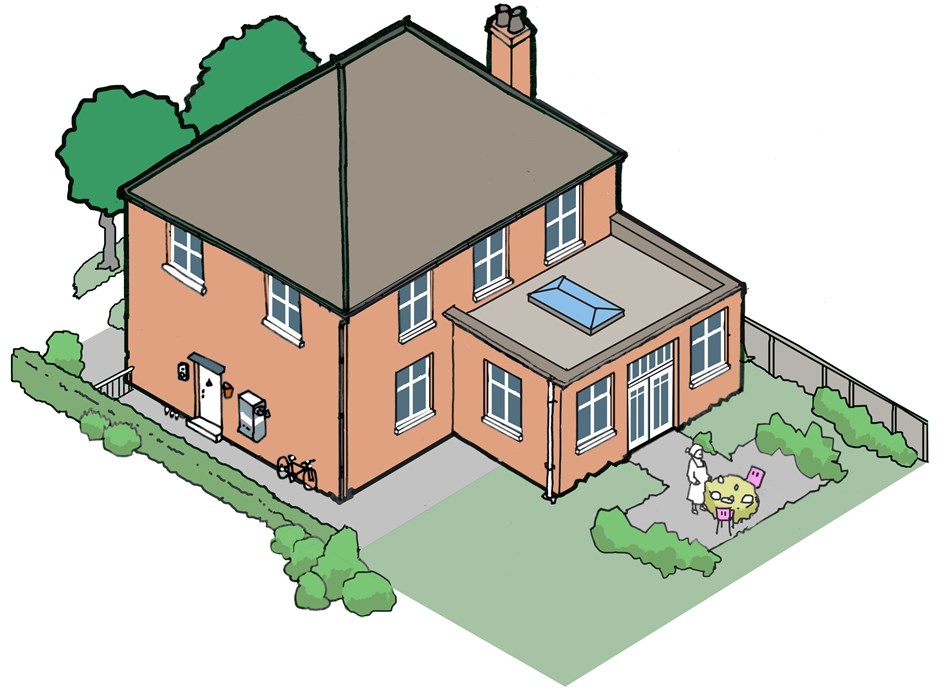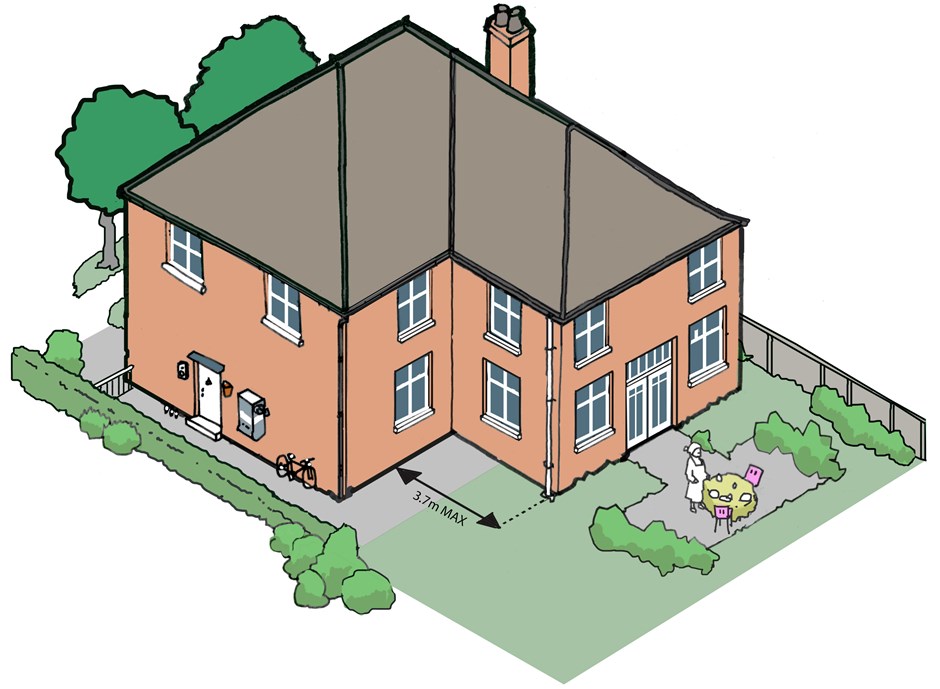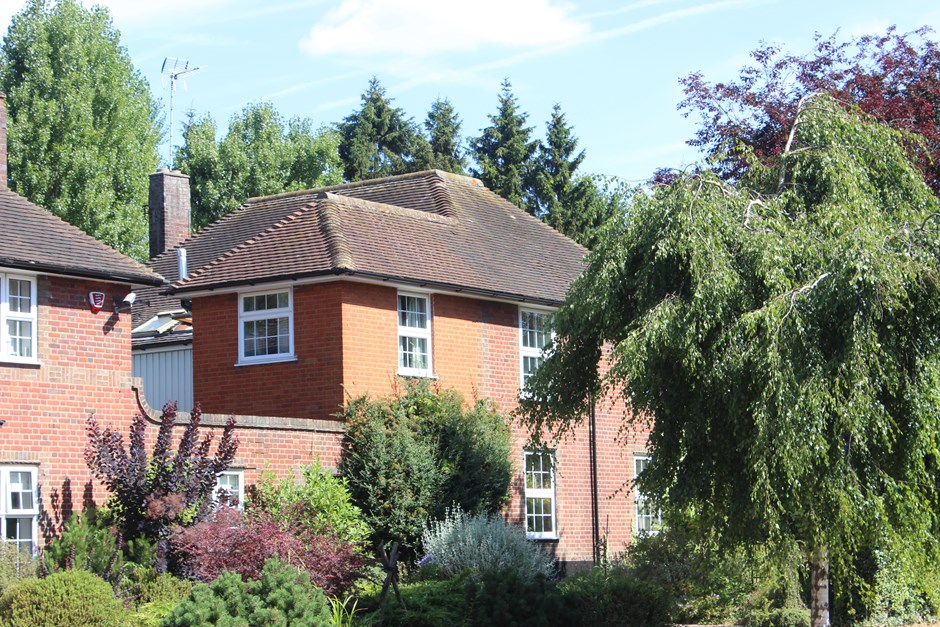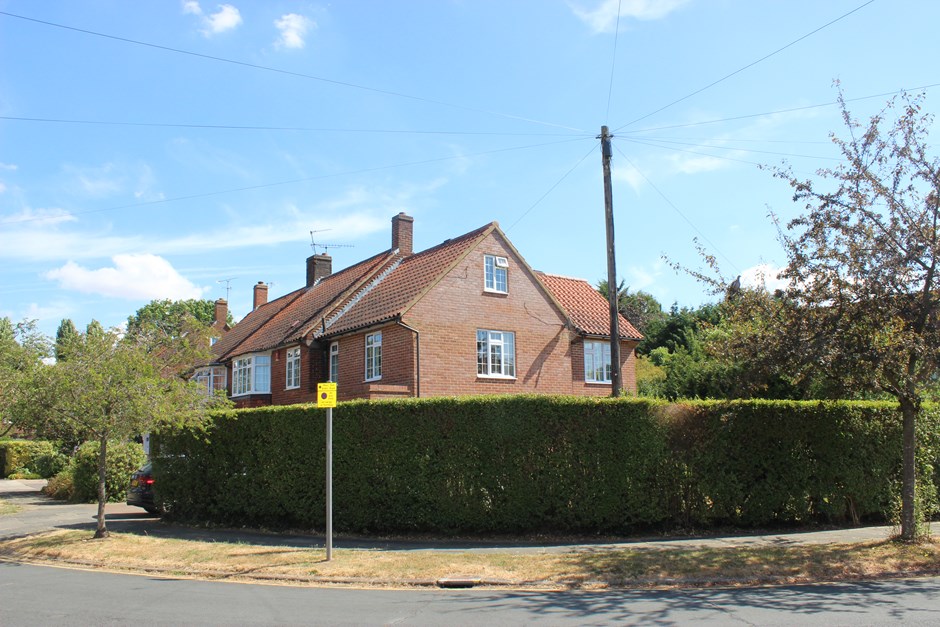Rear Extensions
Policy EM1 - Extensions and Alterations Policy
Extending a property to the rear of an existing Garden City dwelling can cater for growing homes without the requirement to moving. Extending to the rear of a property can have impacts on core principles where homes would typically stand within well-proportioned gardens ensuring large gaps between buildings are retained to provide a feeling of openness and views to the green gardens behind. Proposing development which contradicts these approaches can have a detrimental impact on the overall values and amenities of the property, neighbours and the street scene.
The following guidance provides key design principles for the rear extension of properties within the Estate Management area. This section provides residents and architects with a clear approach to determine the acceptable standards in layout, scale and design in order to respect and maintain the values and amenities of the property, the street scene and the unique architectural heritage of the Garden City.
- All alterations to properties located within the Estate Management Scheme should complement the character and style of the original home. Rear extensions should achieve this through the matching of materials, scale, fenestration, proportions and architectural detailing.
- The overall scale of an extension should be proportionate and adequately subordinate to the original property.
- Rear extensions should not over dominate rear gardens. Garden settings are important to the character of the Garden City. Proposals which could lead to over developed rear gardens will not be accepted.
- Fenestration at the rear ground floor can have a more relaxed approach where it is not visible from a public vantage point.
- Roof lights and lanterns must be avoided where visible from a public vantage point. Typically these can be positioned behind parapets to ensure adequate screening is achieved.
- Multiple extensions should be avoided which cumulatively result in an overdeveloped property.
- Extensions must ensure that there they do not cause loss of day/sun/sky light or be unduly dominant from adjoining properties as a result of their overall scale and size.
- Window positions must avoid overlooking to neighbouring properties.
- Proposed structures, including roofs or gutters, should not overhang property boundaries. Should works extend beyond the property’s boundary, a separate EMS application will be required to be submitted from the owner of the neighbouring property. Applications can only be submitted for the land owned by the applicant.
Ground Floor Extension (Single Storey)
Ground floor extensions must be designed to accommodate a flat roof system unless individual circumstances indicate otherwise. Parapet roof detailing is deemed acceptable.
It may be considered acceptable for single storey rear extensions to extend up to 4m from the main rear of the original building line, ensuring the proportion and character of the property is responded to and that neighbour amenities are maintained. Extensions that are full width of the existing house can be acceptable subject to the detailing, proportions and design of the extension.
Building heights should be designed in line with Building Regulation guidance
Any roof lights or lanterns must not be visible from a public vantage point.
Two Storey Extensions
Two storey extensions require greater levels of sensitivity to take into regard the proximity of neighbouring properties. As a result, an offset of up to 3.7m from the rear of the original building line may be acceptable, although lesser depths may be required for properties in close proximity to their neighbours. The exception to this would be for larger detached plots where a two storey extension could extend a greater distance due to possible lesser impacts on neighbouring properties. All applications should demonstrate how any likely impact on neighbouring properties is minimised including loss of day/sun/sky light.
Upper floor roof pitches should be consistent with the original design of the property where the extended roof is designed to merge with the existing roof structure. Typically crown roof structures are not supported as they do not reflect the original style of a Garden City property and often indicate an extension that is too large. However these could be considered should strong justification be provided and where it can be demonstrated that the impact on the character and value of the property would be limited.
Two storey rear extensions that project beyond the side gable wall of the original home will be subject to the principles for side extensions. Key detailing in how the side and rear extensions meet will be important on the impact of the original property and the value and amenities of the wider streetscene.
Page updated: 29/04/2019




